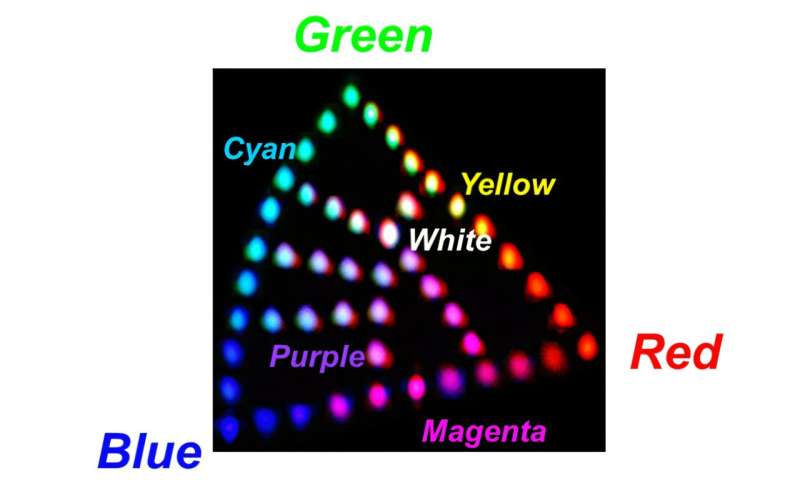A team of researchers from the TDK Corporation in Japan has developed a groundbreaking RGB multiplexer that significantly enhances the speed and efficiency of light modulation in laser beam scanning (LBS) systems. This innovation, detailed in the journal Advanced Photonics Nexus on July 28, 2025, leverages thin-film lithium niobate (TFLN) to combine red, green, and blue laser beams into a single output, aiming to improve various applications, from barcode scanning to laser light shows.
Traditional methods of combining RGB lasers typically involve directly modulating each laser, a process that can be slow and energy-intensive. The novel TFLN-based multiplexer offers a more efficient alternative by utilizing electric fields to control light propagation. Corresponding author Atsushi Shimura emphasizes the importance of this development, stating, “A TFLN-based RGB multiplexer is essential for LBS with lower power consumption and higher resolution.”
Innovative Fabrication Techniques
The new multiplexer measures just 2.3 millimeters in length and was fabricated using a physical vapor deposition technique, commonly known as sputtering. This method allows for precise deposition of the lithium niobate film and the subsequent etching of waveguides that direct the laser light. By avoiding the complex bonding processes typically associated with bulk lithium niobate, this approach paves the way for scalable and cost-effective production of compact optical circuits.
The design of the waveguides features a trapezoidal cross-section, which significantly minimizes signal loss. By fine-tuning the lengths of the combined sections, the researchers successfully achieved effective combinations of laser intensities, producing mixed colors like cyan, magenta, and yellow. The ability to create white light by combining all three primary colors highlights the precise color control necessary for advanced LBS displays.
Challenges and Future Directions
Despite these promising results, the study identifies critical challenges that must be addressed. One notable issue is the lower crystal quality of the sputter-deposited TFLN compared to its bulk counterpart, particularly affecting performance at shorter wavelengths. For instance, the optical loss at 473 nm (blue light) was measured between 7 and 10 dB, considerably higher than the simulated value of 3.1 dB. This discrepancy is attributed to surface roughness in the waveguides, which leads to light scattering and reduced efficiency.
Shimura points out, “Optimizing fabrication processes to produce smoother surfaces is a key step toward realizing TFLN’s potential in visible-light photonics and applications.” The findings from this research lay a solid foundation for future advancements in the development of faster, more energy-efficient multiplexers for LBS systems.
As the demand for efficient photonic systems continues to rise, this TFLN-based RGB multiplexer represents a significant step forward in optical technology. The work demonstrates the feasibility of a passive RGB multiplexer, serving as an initial foundation for the creation of active photonic integrated circuits, which could revolutionize the landscape of laser beam scanning applications.
